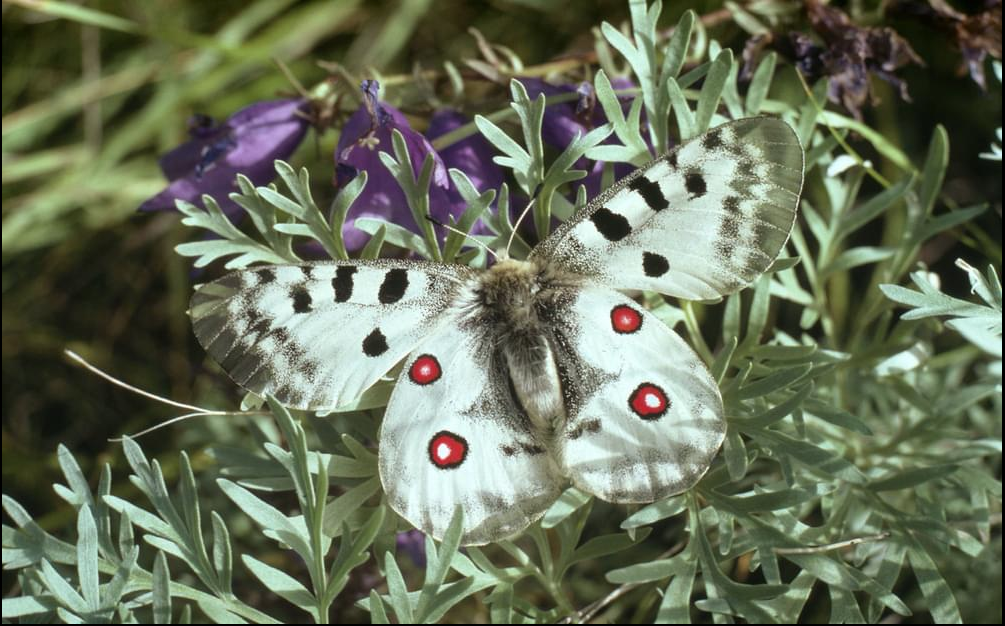Global wildlife populations have suffered an average two-thirds decline in less than half a century due in large part to the very same environmental destruction which is contributing to the emergence of zoonotic diseases such as COVID-19, according to the World Wide Fund for Nature’s (WWF) newly-released Living Planet Report 2020.
The Living Planet Index (LPI), provided by the Zoological Society of London (ZSL) incorporates research from institutions from around the world, including UConn. The reports shows that factors believed to increase the planet’s vulnerability to pandemics – including land-use change and the use and trade of wildlife – were also some of the drivers behind the 68 per cent average decline in global vertebrate species populations between 1970 and 2016.
This year’s report includes information about invertebrates, such as insects, which is a first for the LPI. Graham Montgomery, a former UConn PhD student now at the University of California, Los Angeles, and Eliza Grames, a current Ecology and Evolutionary Biology PhD candidate in the College of Liberal Arts and Sciences, together coordinate the Entomological Global Evidence Map project, or EntoGEM, which makes insect data readily available for inclusion in global assessments of biodiversity. The report highlights EntoGEM, and Grames and Montgomery co-authored an article in the report about global insect population decline.
“EntoGEM is a community-driven, systematic mapping project involving people from around the world who help identify studies and datasets that document long-term trends in insect populations and biodiversity,” Grames says.
Grames and Montgomery say these types of studies are very scattered, therefore projects like EntoGEM, which seek out and organize data, are vital to help get a clear picture of trends and to identify taxa in regions that are more of a conservation concern than in other areas.
“The emphasis on invertebrate conservation in the report perhaps reflects increased public awareness of insect population declines,” says Montgomery, noting recent reports of rapid declines in insect populations. The LPR reports that sharp declines are seen in other species as well.
The Living Planet Report 2020 presents a comprehensive overview of the state of our natural world through the LPI, which tracks trends in global wildlife abundance, and contributions from more than 125 experts from around the world. It shows that the main cause of the dramatic decline in species populations on land observed in the LPI is habitat loss and degradation, including deforestation, driven by how we humans produce food.
“The Living Planet Index is one of the most comprehensive measures of global biodiversity,” says Andrew Terry, ZSL’s Director of Conservation. “An average decline of 68% in the past 50 years is catastrophic, and clear evidence of the damage human activity is doing to the natural world. If nothing changes, populations will undoubtedly continue to fall, driving wildlife to extinction and threatening the integrity of the ecosystems on which we all depend. But we also know that conservation works and species can be brought back from the brink. With commitment, investment and expertise, these trends can be reversed.”
The LPR 2020 also includes pioneering modelling which shows that, without further efforts to counteract habitat loss and degradation, global biodiversity will continue to decline. Stabilizing and reversing the loss of nature caused by humans’ destruction of natural habitats will only be possible if bolder, more ambitious conservation efforts are embraced and transformational changes made to the way we produce and consume food. Changes needed include making food production and trade more efficient and ecologically sustainable, reducing waste, and favoring healthier and more environmentally-friendly diets.
The research shows that implementing these measures together, rather than in isolation, will allow the world to more rapidly alleviate pressures on wildlife habitats, thereby reversing biodiversity trends from habitat loss decades earlier than strategies that allow habitat losses and then attempt to reverse them later on. The modelling also indicates that if the world carries on with “business as usual,” rates of biodiversity loss seen since 1970 will continue over the coming years.
Reversing these trends will take time and will require wise, science-based decisions. For this, Montgomery says it is crucial to have more data.
“We’ve been able to find potentially hundreds of long-term datasets that are at least a decade long that haven’t been included in analyses before now,” says Grames. “Since insects are central to food webs. You can’t really think about conservation of bats or birds or other animals if you aren’t thinking about how insects are doing.”
Supporters are invited to add their names to WWF’s petition which can be found at: panda.org/pandemics and help call on world leaders to implement policy frameworks and action plans that implement a ‘One Health’ approach which ensures they are doing all they can to protect us from future pandemics.



